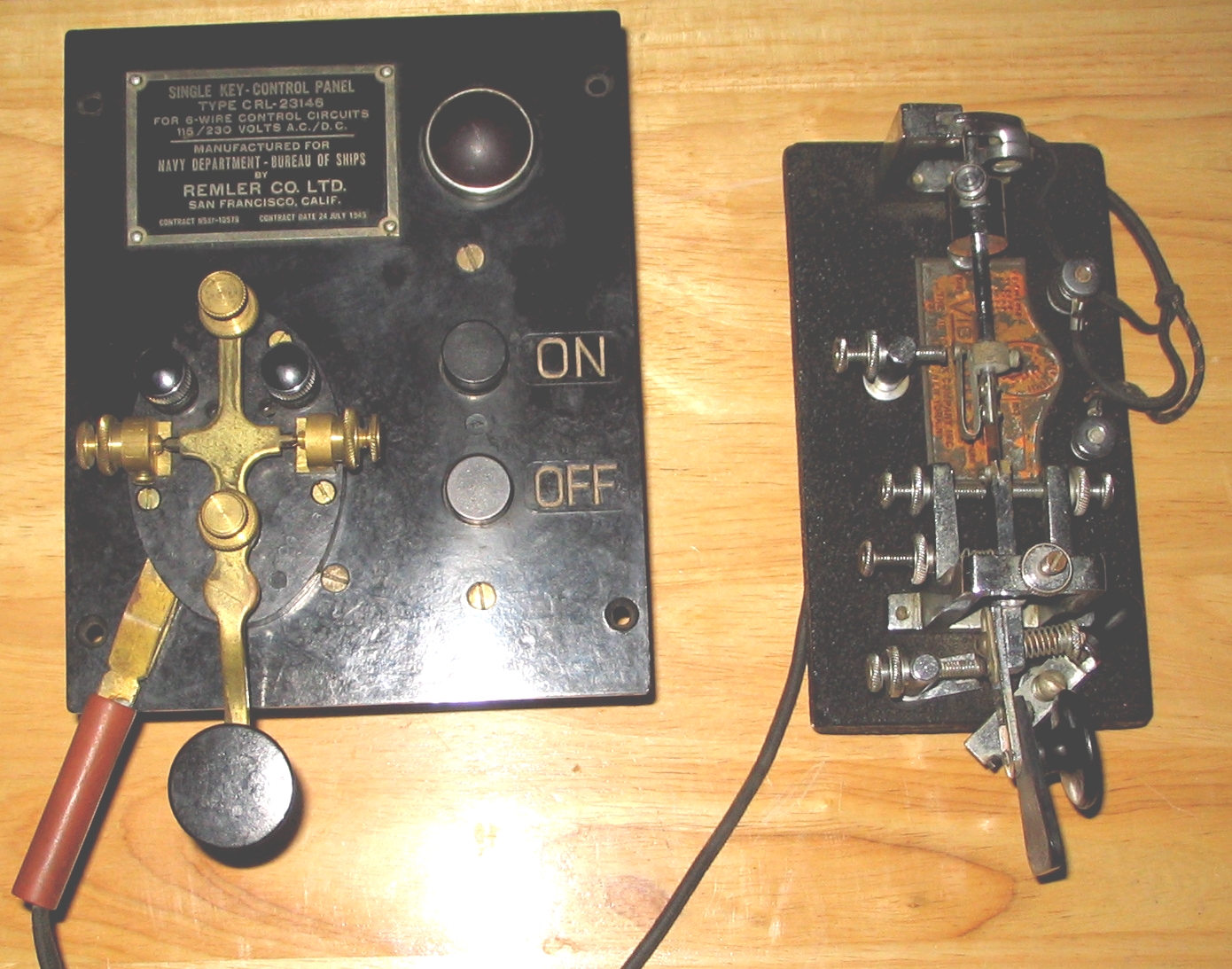|
TBW
To call what I was using a TBW is a slight
misnomer, as all I was using is the CAY-52239 HF
module. The set is designed for
forward base use, and travels in waterproof containers.
The TBW runs on 800-cycle power, which is
normally provided by a generator. This not only lightens
the power supply components, but facilitates plate keying of
the transmitter. I replaced the power supply and
generator with a power supply and keying unit that tried to
duplicate the original operating conditions as much as
possible.
The keying relay in this transmitter is fun,
drawing a whopping 3 Amps at 12 Volts. One
contact(K-301B) on the relay grounds the cold end of the grid
leak on the master oscillator(M.O.) and intermediate
amplifier(I.A.). Another contact(K-301A) applies the
120V 800-cycle power to the primaries of the high voltage
supplies for the power amplifier and the I.A. and M.O.
Adequate filtering can be had with 800-cycle power, using only
a 1uF filter, which charges rapidly. Since primary
keying of a 60-cycle power supply is not feasible at
reasonable keying speeds, I keyed the D.C.
voltage instead of the primary, using high voltage
relays, and a shaping circuit consisting of a 100-ohm resistor
and 1uF capacitor to get a similar waveform to the
original.
NAVY
KEYS

|
| CAPH-26012B Key on 6-wire Control
Unit |
The 26012B
key is an interesting one I picked up summer of 2005, which
has some nice properties. The contacts are isolated from
the lever and other exposed hardware, which means no nasty
shock when you reach blind for the key when it is hooked up to
one of the many Navy transmitters that run 120/230V on the
key. Another interesting feature is the socket to insert
a wedge for a speed key AKA "bug". The 26012B key
pictured above was installed on the 6-wire control unit by me,
and it looks at home there. The only thing I can't
resolve is that there is a provision for grounding the lever
through the left hand support, but there is no place for a
ground wire to go through the top of the control unit.
Pictured with the key and control unit is a civilian "bug" by
Vibroplex.
|